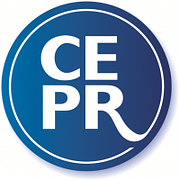_33.png)
PROO are non-tariff barriers (NTBs) for exporters. Complying with ROO requirements entail costs for producers, exporters, and customs officials. Observers, firms, customs officials, and policy-makers have advocated simplification and, in the case of large-membership PTAs like African Continental Free Trade Area (AfCFTA), harmonization as well. Following the creation of the WTO and the accompanying move towards a rules-based world trade system, many Non-Tariff Measures (NTMs), like absolute quotas, domestic content requirements, have been abolished, leaving PROO as one of the few areas where countries can negotiate requirements reciprocally unimpeded. The result is a forest of ROO which we still discover and know relatively little about, except perhaps that if (knowledgeable) traders estimate that compliance costs exceed benefits from preferential market access, they will not apply for preferential status. Indeed, for the majority of PTAs, publicly available information on Preference Utilisation Rates (PURs) are not available. Even, if PURs were available, all we would know is that rents from preference margins would exceed compliance costs.
The paper surveys the literature drawing on the extensive database in ITC’s ROF database covering 54,000 distinct ROO spread across 370 PTAs to illustrate the issues covered in the literature. First, word overlap and regulatory proximity metrics are applied to the Regime Wide Rules (RWRs) and Product Specific Rules (PSRs) in the major families of ROO: Association of Southeast Asian Nations (ASEAN), EU PANEURO, North American Free Trade Agreement (NAFTA) to gauge differences across these families. The results from the comparisons raise the possibility of excessive diversity in ROO criteria, which may apply also to ROO for non-preferential purposes (e.g. ‘made in’ labelling).
The remaining sections review what we know about the compliance costs associated with ROO requirements. These costs are illustrated graphically in section 3 and summarized in a formula that decomposes compliance costs along two dimensions: distortionary costs resulting from the restrictiveness of ROOs and administrative costs. Section 4 surveys the evidence by themes: (i) determinants of the utilisation of preferences; (ii) effects on third countries outside the PTA; (iii) choice of rule; (iv) preference margin and complexity of rules; (v) trade deflection; (vi) firm-level evidence. In conclusion, drawing lessons from the empirical literature is a complicated exercise because preference uptake, an important indicator of compliance costs, is only available for a handful of PTAs at the disaggregated product level.
de Melo J., Kniahin D. (2022) "A Primer on Rules of Origin as Non-Tariff Barriers", Centre for Economic Policy Research Discussion paper 17076